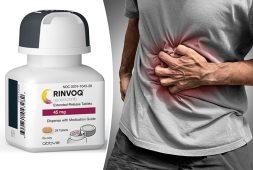
Similar to what everyone had to do during COVID, kids were made to take nasal swabs to see if they were infected with the virus. And now, American researchers have identified a potentially more effective method to diagnose sinus infections in kids and determine whether they need to use antibiotics in a similar manner.
This approach involves checking for three specific types of bacteria in youngsters with symptoms of sinusitis. These are usually characterized by sinus inflammation or swelling, which leads to congestion, a runny nose, discomfort, and breathing difficulties. While doctors usually prescribe antibiotics to treat sinusitis, it is often caused by a virus, making it much more difficult to correctly diagnose.
Study lead author, Professor Nader Shaikh of the University of Pittsburgh, said, “Five million kids in the U.S. get prescribed antibiotics for sinusitis each year.”
“Our study suggests that only half of these kids see an improvement in symptoms with antibiotic use, so by identifying who they are, we could greatly reduce unnecessary antibiotic use,” he adds.
He also says that it’s usually very difficult to properly diagnose the nature of a sinus infection.
“For an ear infection, we can look inside the ear; for pneumonia, we listen to the lungs. But for sinusitis, we have nothing to go on from a physical exam. That was very unsatisfying to me,” he shares.
To improve the diagnosis of bacterial sinusitis, Professor Shaikh and his team conducted a study involving approximately 500 children exhibiting sinusitis symptoms at six locations across the United States. These children were randomly assigned to receive either a course of antibiotics or a placebo.
Nasal swabs were taken from each child’s nostrils to test for the three primary bacteria associated with sinusitis.
Children who tested positive for the bacteria had better resolution of symptoms after antibiotic treatment as compared to kids who didn’t have any bacteria.
Published in the Journal of the American Medical Association (JAMA), the findings suggest that testing for bacteria could be a simple and effective way to see whether each child would benefit from antibiotic use, avoiding having to prescribe the drugs to kids who don’t need them.
“If antibiotics aren’t necessary, then why use them? These medications can have side effects, such as diarrhea, and alter the microbiome, which we still don’t understand the long-term implications of,” said Dr. Shaikh.
“Overuse of antibiotics can also encourage antibiotic resistance, which is an important public health threat,” he adds.
One of the more common beliefs among parents and doctors is that if the mucous is either yellow or green in color, it means there is a bacterial infection present.
However, Dr. Shaikh also says, “But we found no difference, which means that color should not be used to guide medical decisions.”
The study underscores the continued significance of basic scientific research. It demonstrates how seemingly straightforward trials can truly have profound implications. As our understanding of the human microbiome expands, the antibiotic-resistant infections affecting 2.8 million Americans annually and a slowdown in the development of new antibiotics, this research remains crucial.



